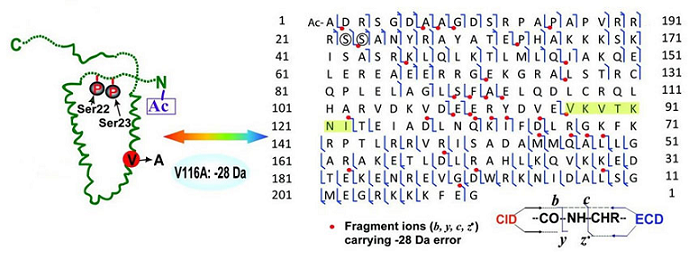Protein Structure Identification Service
The utilization of the bottom-up approach in proteomics is often constrained by the incomplete characterization of alternatively spliced isoforms, a wide array of post-translational modifications, and native protein degradation. With advancements in analytical technologies, the top-down strategy has gained prominence. Beyond the FT-ICR mass spectrometer, the development and innovative applications of the Orbitrap mass spectrometer have significantly enhanced top-down proteomics.

Figure 1. Identification of Protein Structure
Since proteins do not require digestion before analysis, employing a top-down strategy can retain and detect information lost when using shotgun methods, such as the quaternary structure containing disulfide bonds. This unique advantage of the top-down approach enables the characterization of disulfide bonds and other post-translational modifications at the protein level. As a result, the top-down method is increasingly applied in QC analyses of protein therapeutics like insulin to assess whether recombinant proteins are correctly expressed, folded, and assembled.
MtoZ Biolabs employs the Thermo Fisher Orbitrap Fusion Lumos mass spectrometry platform combined with nanoLC-MS/MS nanoscale chromatography, providing top-down protein structural characterization services.
MtoZ Biolabs, an integrated chromatography and mass spectrometry (MS) services provider.
Related Services
Protein Structure Characterization Service
X-Ray Crystallography Protein Structure Determination Service
How to order?







